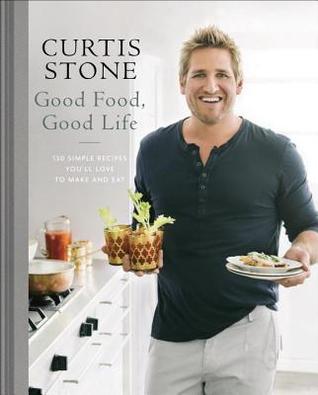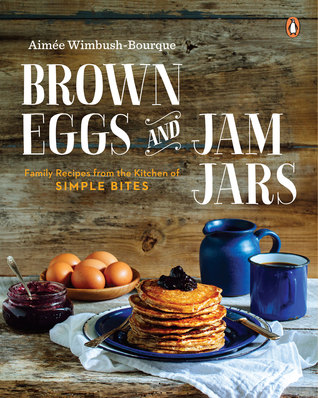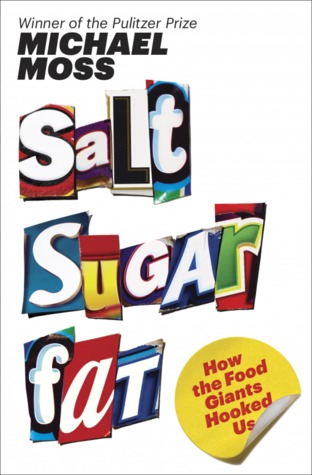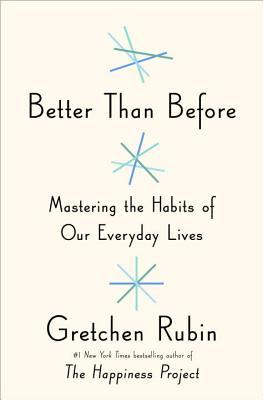Salt Sugar Fat by Michael Moss
Salt Sugar Fat is a really interesting and scary book. Moss basically does over three years of research into the processed food industry to examine how salt, sugar, and fat play a role in our food. The book is divided into three sections – one for each area. What I found most fascinating in how many scientists and chemists these processed food corporations have working for them! Moss interviews many prominent food scientists who discovered things like “bliss point,” the point at which there is the maximum flavor enjoyment by a consumer. There is also a TON of effort and even more money going into advertising. What’s scary is that people seem to think that these companies should somehow be forced by law to create “healthier” products with less salt, sugar, and fat. But, the goal of these companies is to make money – not sell good, healthy food. You can do that at home. It’s also scary how these companies try to show the public that they are making “healthier” changes, when they are not at all. Most have no intention of changing their products because less salt, sugar, and fat doesn’t sell. Usually whichever of the three is more in the news as “unhealthy” they cut that one down a little, but usually end up pumping up the other two culprits to make up the taste difference.
Basically, the answer to all this is to eat less processed crap. Real, whole food that IS healthy and good for you is the solution. Marketing tells us it's too hard to cook when really it's no more time-consuming that using some of the "convenience" foods they sell. Americans need to learn how to cook basic meals and not eat what should be “treats” like chips, cookies, and soda for all 3 meals a day. Here are some of the many quotes that I really liked:
“First, the food companies themselves are hooked on salt, sugar, and fat. Their relentless drive to achieve the greatest allure for the lowest possible cost has drawn them, inexorably, to these three ingredients time and time again. Sugar not only sweetens, it replaces more costly ingredients – like tomatoes in ketchup – to add bulk and texture. For little added expense, a variety of fats can be slipped into food formulas to stimulate overeating and improve mouthfeel. And salt, barely more expensive than water, has miraculous powers to boost the appeal of processed food.” (p. xxix)
“The persistent attacks on sugar had an effect. That same year [1985], Post changed the name of its Super Sugar Crisp Cereal to Super Golden Crisp, though its sugar levels remained at more than 50 percent. A spokeswoman said at the time that the change was made in ‘recognition that there’s a sensitivity to the word sugar’.” (p. 81-2)
“In nutrition circles, where the causes of obesity are discussed, there is no single product – among the sixty thousand items sold in the grocery store – that is considered more evil, more directly responsible for the crisis than soda. The problem, as growing numbers of nutritionist see it, is not the calories in soda, though calories are ultimately what causes us to gain weight. Rather, it’s their form: Research suggests that our bodies are less aware of excessive intake when the calories are liquid.” (p. 98)
“As I spoke with scientists about the way fat behaves, I couldn’t resist drawing an analogy to the realm of narcotics. If sugar is the methamphetamine of processed food ingredients, with its high-speed, blunt assault on our brains, then fat is the opiate, a smooth operator whose effects are less obvious but no less powerful.” (p. 148)
“One of the most successful approaches to marketing lean beef turned out to be the most controversial…It involved ammonia. This created the leanest, least expensive, most-commonly eaten burger America had yet seen – that is, until the public caught on and the lean, ammonia-processed beef came to be known as ‘pink slime.’ This material – which the USDA preferred to call ‘lean finely textured beef’ – is produced by taking pieces of beef from the fattiest parts of the cow – ranging up to 70 percent fat – that has previously been diverted to pet food or tallow. The material is then put through a high-speed centrifuge that spins much of the fat off, leaving a mash that has the virtue of being quite lean, with all but ten percent of the fat removed. It is then formed into 30-pound blocks, frozen, and shipped to meat plants, where the blocks are combined with other beef trimmings to make hamburger. The defatted beef became popular with the companies that make hamburger for another reason: It was 15 percent cheaper than the naturally lean meat from South America, where ranchers raise their cattle on grass, forgoing the fat-inducing process of corn feeding that is typical in the American beef industry. The money to be saved was significant, and not only to grocers and restaurant chains like McDonald’s, who bought hamburger made with the defatted beef. The USDA itself realized that it could shave up to three cents off the price of every pound of hamburger it was buying for school lunch programs.” (p. 226-7)
“Babies love sugar the instant they are born…But babies do not like salt. They don’t like it at all until they are six months or more into their lives, and even then, they have to be coaxed. This idea that salt is being pressed upon America’s kids comes from the scientists at Monell, who have been pushing hard to pinpoint the genesis of our taste for salt. They wanted to know what caused kids to like salt, if it wasn’t a natural thing for them to do. So they followed sixty-one children, starting at infancy. First, they surveyed their parents to learn how much salt the kids got in their diets, and the kids fell neatly into two camps: One group was eating what their parents ate, salty cereal and crackers and bread made by food manufacturers, while the other got baby foods that had little or no salt, like fresh fruits and vegetables…At six months, however, when they were tested again, the kids split into two groups. Those who had been given fruit and vegetables to eat still preferred plain water to the salty solutions. But those who had been fed foods that were salty now liked the salty solutions. Over time, the two groups – the salted and the unsalted – grew even more disparate…When the study was released, Gary Beauchamp, the center’s director and a co-author, talked about its significance. Kids…were not born liking salt. They have to be taught to like the taste of salt, and when they are, salt has a deep and lasting effect on their eating habits.” (p. 279-80)
“It had taken me three and a half years of prying into the food industry’s operations to come to terms with the full range of institutional forces that compel even the best companies to churn out foods that undermine a healthy diet. Most critical, of course, is the deep dependence the industry has on salt, sugar, and fat…Salt, sugar, and fat are the foundation of processed food, and the overriding question the companies have in determining the formulations of their products is how much they need of each to achieve the maximum allure.” (p. 337)
“On a personal level, I found that many of the executives I talked to go out of their way to avoid their own products.” (p. 341)

Frankenstein by Mary Shelley (Books & Banter book club)
I remember really liking this one after having to read it for my Senior year of high school, and after re-reading it as an adult I still like it. Frankenstein's monster is nothing like the depictions in the movies - he is a monster who longs for connection. When he doesn't receive it from his creator Frankenstein, he tries to find it elsewhere, but is constantly attacked by any humans he encounters. Soon he decides to wreak havoc on any humans that get in his way, but especially anyone Frankenstein loves or cares for. When Frankenstein is confronted by his creation and asked to create a companion for him in exchange the monster will leave humans alone for good; he is torn. Does he create another horrific creature and hope his monster is truthful or does he live with the consequences of the monster's wrath? This book brings up lots of issues to think about - what happens when humans play God? How the consequences of our actions affect innocent people. What does Frankenstein owe, if anything, to his creation?
My only complaint would be that like many classics there is a LOT of detail to characters, setting, history, etc. that could be shortened or cut out altogether. Still an interesting story overall and I like how Shelley laid out the story as a story within a story.
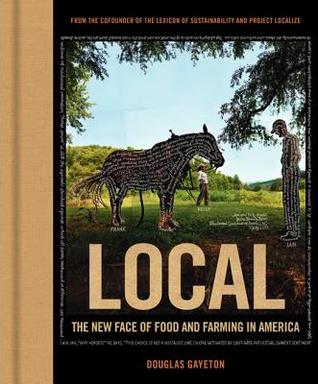
Local: the new face of food and farming in America by Douglas Gayeton
Local: the New Face of Food and Farming in America is almost a coffee table book with all the beautiful photos of local, small farms and farmers. Gayeton is inspired by what he calls his “Road to Damascus” moment when he brought his wife and daughter to the creek he grew up visiting when the salmon were running, but they were no longer running due to a variety of factors. “If people don’t understand the meaning (and implication) of terms like Food Miles, Carbon Footprint, CSA, Organic, Food Security, Food Desert, GMO, Grass-Fed, Direct Trade, or even Pasture-Raised, how can they live more sustainably? To help ‘take back’ the meanings of these important ideas, I set out to document the work of two hundred thought leaders, architects of a new vocabulary reflecting the most promising solutions for creating a vital and sustainable food system in this country.” (p. 10) This is a beautiful and inspiring book about small farmers who are taking back the food system from Big Ag. My only (small) complaint is that the cursive text on some of the photos is hard to read and it’s such interesting information that you don’t want to miss any of it, so I wish the font was easier to read. Overall, a great book about some awesome people making a difference in the food world!
“Consumers’ willingness to align their values with those of the product their buying – even when it’s something as cheap as a dozen eggs – means the industrial food system is a house of cards. It proves that when presented with clear, compelling explanations about what they’re eating, consumers will make purchases that reflect their ever-expanding food literacy. When consumers shop and eat according to their values, the food industry is forced to adapt.” (p. 13)
“Even though GMO seeds are commercially available in the United States, researchers are required to ask permission from these seed companies before conducting tests. If no permission is granted, there’s no legal way to perform a study. Conversely, permission given can be just as easily withdrawn if a seed company becomes disenchanted with the potential outcome of this research.” (p. 95)
“Wycall’s story represents the fundamental challenge now facing ambitious farmers across the United States: how to transition land from Conventional Farming back to its Organic or ‘Pre-Chemical’ state. It took eight years of patient research on Wycall’s part – interspersed with dark periods that left him paralyzed by self-doubt – before his soil came back to life [after 25 years of conventional farming on family land].” (p. 117)
“A healthy farm is a stable, functioning organism, a system with many moving parts – some animal, some vegetable, and some mineral. They are influenced by the rhythms of nature and kept in balance by a farmer who acts as his land’s steward and protector.” (p. 126)
“Feldman recounts an infamous urban legend that turns out to be true: ‘The Case of the Mysterious Red Honey.’ In 2010 local beekeepers opened their hives to discover honey frames stained red. Was it bacteria? A bee toxin? Perhaps bees pollinating an odd flower like sumac? For months beekeepers pondered the mystery before discovering its cause: a maraschino cherry company in neighboring Red Hook. Instead of pollinating, the bees had fixated on a steady diet of corn syrup and Red Dye No. 40. Such are the travails of urban beekeeping.” (p. 140-145)
“Sustainable agriculture has no single figurehead – nor does this defiant, disparate movement have a center – but if it wants an able spokesperson, [Joel] Salatin would be a safe bet. He’s a professional contrarian, a knowledgeable agricultural apostate who not only practices what he preaches but has the rare capacity to explain it to others. While his summers are devoted to farming, his winters are spent literally barnstorming the country – from grange hall to farm to classroom – as he expounds on the joys of grass farming.” (p. 174)

Close Your Eyes, Hold Hands by Chris Bohjalian (Evening Edition book club)
You never know what to expect from Chris Bohjalian. Close Your Eyes, Hold Hands follows Emily Shepherd after a nuclear meltdown happens in her town - the nuclear station where both her parents work. It's amazing how spectacularly terrible the few years after the meltdown are for her. She ends up homeless, lives for awhile with a drug dealer working as a prostitute for him, takes in a nine-year-old boy who's also homeless, and eventually tries to get back home. The story is told in a disjointed way, but probably in a realistic way for a teen who's gone through what Emily went through. While Emily is a likable character, the book is rough and hard to read, but probably tame compared to what a lot of homeless kids go through. It was definitely interesting and when she finds her dog in the end, while HIGHLY unrealistic, it was a great way to end the book. I didn't love it, but I was interested enough to keep reading and I wanted to know what was going to happen to Emily. Definitely a different kind of book.

The Tastemakers: Why we're crazy for cupcakes but fed up with fondue by David Sax
This is a fascinating book that explores how food trends come about and why they are important. Sax covers everything from the cupcake craze to bacon flavored EVERYTHING to "expired" trends like fondue. It's interesting to me how many trend-predictors there are and how they attempt to forecast food trends. The book is divided into three parts - the four types of trends, how trends break out, and why food trends matter. Whether you consider yourself a foodie or not, if you're interested in food at all this book is worth reading. I learned a lot and whenever the next food trend arises I'll understand all that goes into a trend a little better.
Here are some quotes I liked:
"Yes, Anson Mills was a company that existed to sell grains to high-end customers (their products are much more expensive than their competitors'), but at its core Roberts saw his mission as part of a 'Robin Hood syndrome.' In 2003, when the company began taking off, he founded the Carolina Gold Rice Foundation, a nonprofit that funds research into heirloom grains from the Carolina Rice Kitchen and distributes those grains for free to interested farmers around the United States as well as cofunding research projects with the USDA, such as the China Black trials. 'My mission is to recover something from extinction and make sure the avenues to scale it up are open.' Already, he had distributed up to seventy tons of seed entirely free, including donations of Einkorn wheat to the radition-ravaged farms around Japan's damaged Fukushima reactor, and aided the southwest's Hopi Native Americans in recovering their nearly extinct blue corn crop. To Roberts, Anson Mills was just the means to fund and publicize the work he was doing at his foundation." (p. 48)
"'From a nutrition educator's point of view, it's 'Here we go again,'' said Chassy [Dr. Bruce Chassy, professor emeritus of food science and human nutrition at the University of Illinois] regarding each new health and diet trend that emerges. 'The message is: eat a balanced diet in moderation, which is totally counter to the message of a superfood, which is basically saying, 'eat one thing as much as possible.'' We want to have our cake and eat it, too, and now with chia flour cake mix (selling at twice the price of a normal cake mix), we can eat it without feeling guilty. 'What Dr. Oz is doing is very, very bad because it reinforces the mistaken belief that there's a magic answer. The magic answer, you've heart it all! Get sleep, exercise, get a balanced diet. That's what the scientific literature supports. Every time Dr. Oz sells you blueberries and pomegranates, he's selling you snake oil.'"(p. 99)
"Perhaps the most striking story is that of the lowly Patagonian toothfish, a snarly species that swam in the cold waters of South America. So ugly that even the Chilean fisherman who accidentally caught the fish refused to eat it, the Patagonian toothfish (also called Cod of the Deep by fishermen) was an unknown, unwanted, and unmolested species up until 1977. That was the year that a young Los Angeles seafood importer named Lee Lantz took a trip to Chile to meet with suppliers and encountered a giant Patagonian toothfish...the fish piqued his curiosity, and when Lantz began asking questions he found that the Patagonian toothfish had the characteristics he was looking for: it was white-fleshed, meaty, relatively mild, and oily enough to withstand cooking heat...However...Americans wouldn't buy something called Patagonian toothfish...or Cod of the Deep...Lantz slapped Chilean at the front of sea bass to conjure up images of clean ocean waters and exotic locales...Though it took several years to catch on with the public, by the late 1990's Chilean sea bass was the darling fish of the seafood trade. Its price rose tenfold, to over $10 a pound..." (p. 164)

The Objects of Her Affection by Sonya Cobb
Sophie Porter always dreamed of having the perfect house to raise her children in. When she finds her dream house is doesn't take too much convincing that they can afford it and all the renovations it needs. Before having kids Sophie was a freelance web designer and knows she can get enough work to make ends meet...until she can't. With her career dead in it's tracks, a huge mortgage and renovation costs, plus the costs of raising her children the "right" way Sophie turns to stealing artwork from the museum where her husband works. Until she takes it too far and the FBI get involved.
I thought the author did a good job of portraying an overwhelmed mother who makes a huge mistake, but Sophie's character still seemed kind of surface-level to me. I also thought everything in the book wrapped up a little too neatly in the end and some of the things that happen in the end are ridiculously unbelievable. For giving up the guy who bought the stolen goods Sophie gets off with NO charges and there is no mention of all the money she got either, both of which seem very unrealistic. I did want to know what was going to happen next in the story, so I kept reading, but overall I didn't love it.
Better Than Before by Gretchen Rubin
I don't think I would have ever read a book about habits if not for Gretchen Rubin. I LOVED The Happiness Project and Happier at Home, so of course I wanted to read Better Than Before. In the same way Rubin explored happiness - general happiness and her own more specifically - she explores habits. Why habits are easier for some people to make and keep than others, specifics about how to create new habits and keep them, and what can get in the way of our habits. If you haven't read her books this probably won't make sense, but I just love her "voice" and style of writing. It's so engaging - like she's a friend who's telling you all about something really cool she just learned. Both of her happiness books and this one definitely made me think more about myself and why I do some of the things I do. It also encouraged me to be more mindful in my life and try to create some better habits in order to improve myself. She also has a great quiz you can take to find out which of the Four Tendencies you are: Upholder, Obliger, Questioner or Rebel. Doing that will help you figure out the best ways to create and keep the habits you want, as well as, break the habits you don't want. Overall, this is an interesting and fascinating book.

You Should Have Known by Jean Hanff Korelitz
Grace Reinhart Sachs is living the perfect life. She's a therapist who's just published a much-hyped book called You Should Have Known about the things women tend to miss or overlook when they meet their partners - and then that information comes back to haunt them later. She lives in the apartment she grew up in and is raising her son Henry with her husband Jonathan, a pediatric oncologist. Everything is going great until another parent at her son's school is murdered - and her seemingly perfect husband is missing. From the first day the police question Grace, her life is turned completely upside down. As she races to figure out who her husband really is, all she can think isYou Should Have Known! This is a fast-paced and realistic story that will keep you up late to finish it.
The book is divided into 3 sections - before, during, and after. The "before" section is a little slow, but once you get past that section you just can NOT put this book down!


